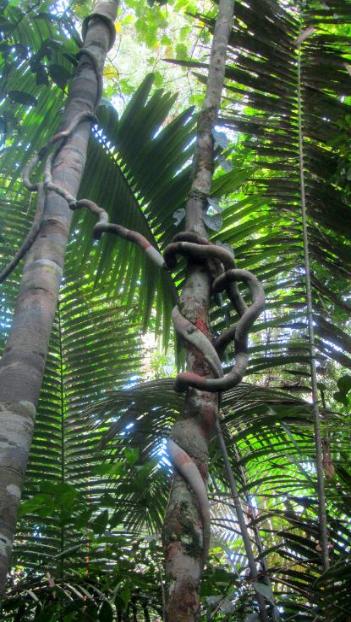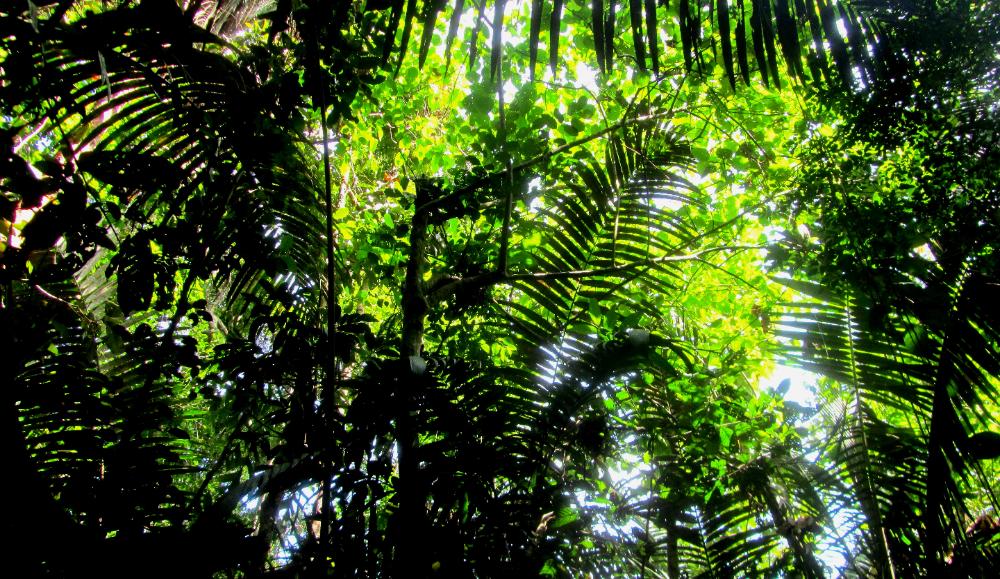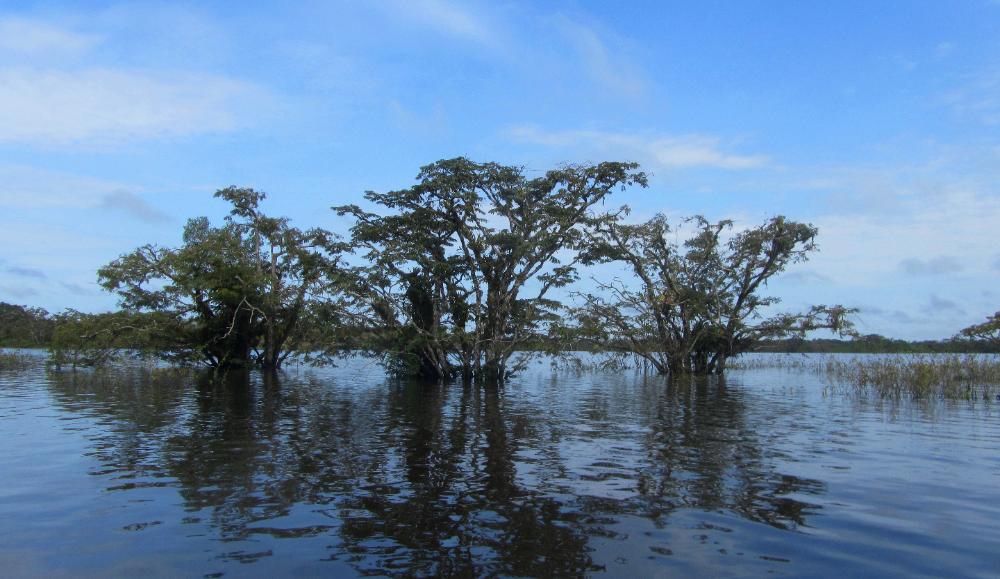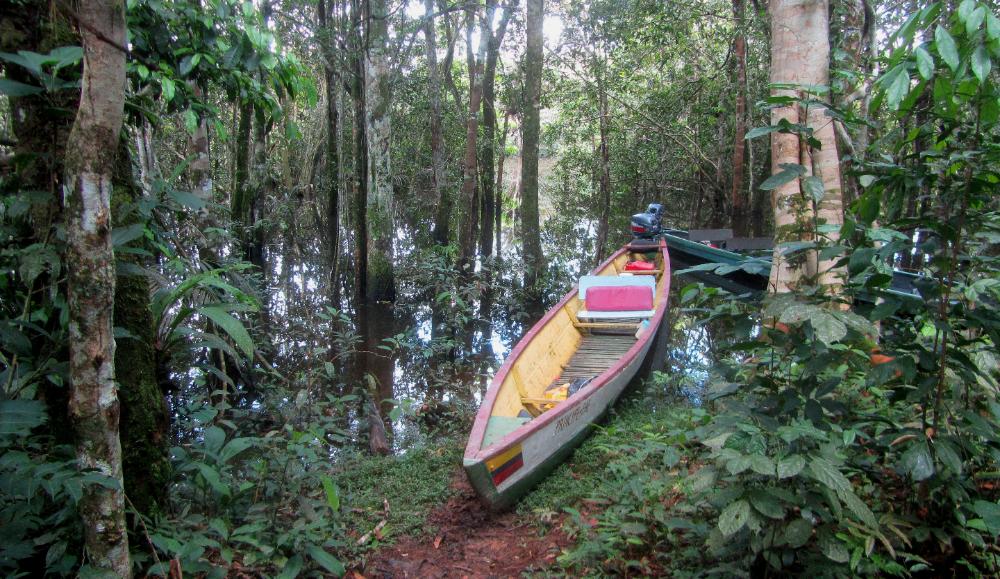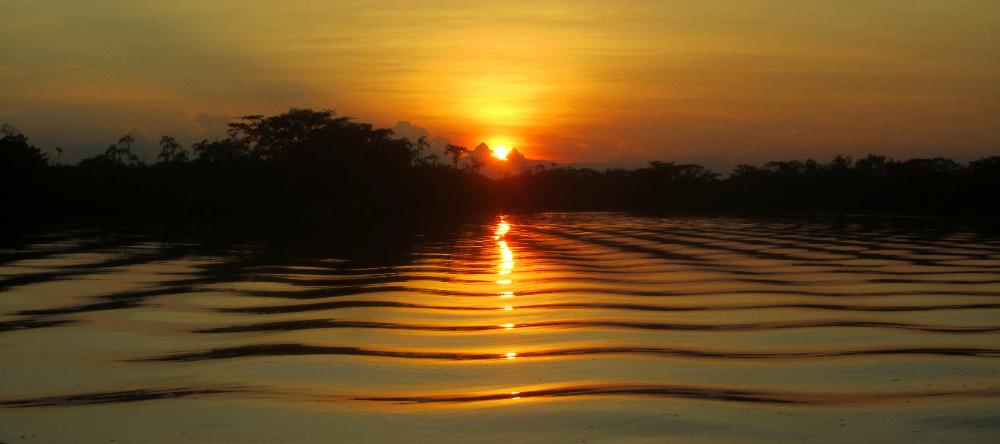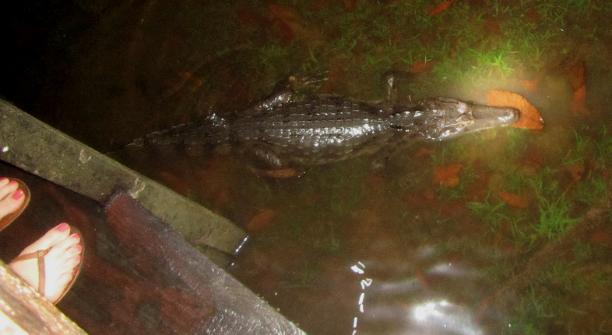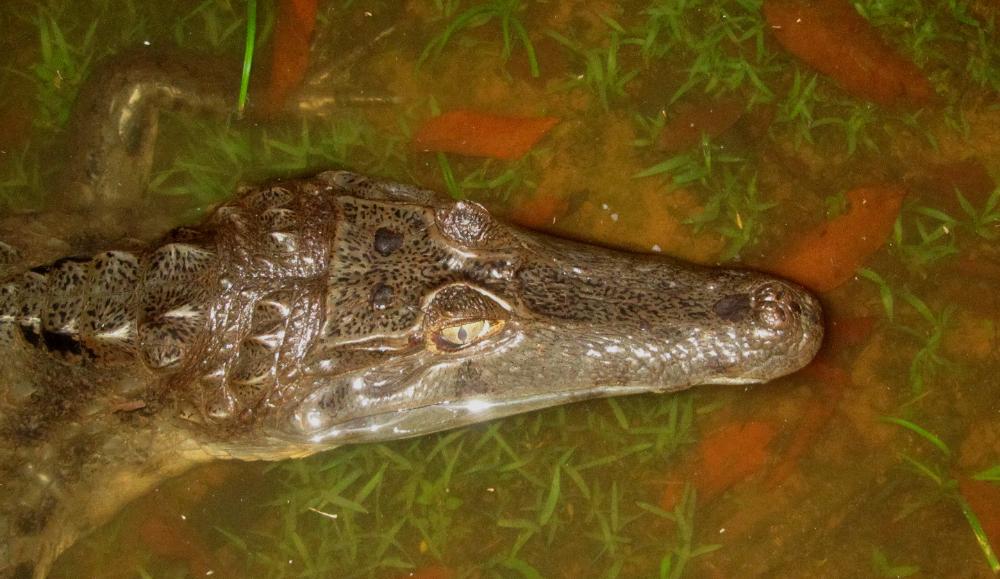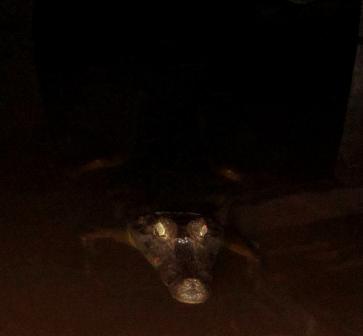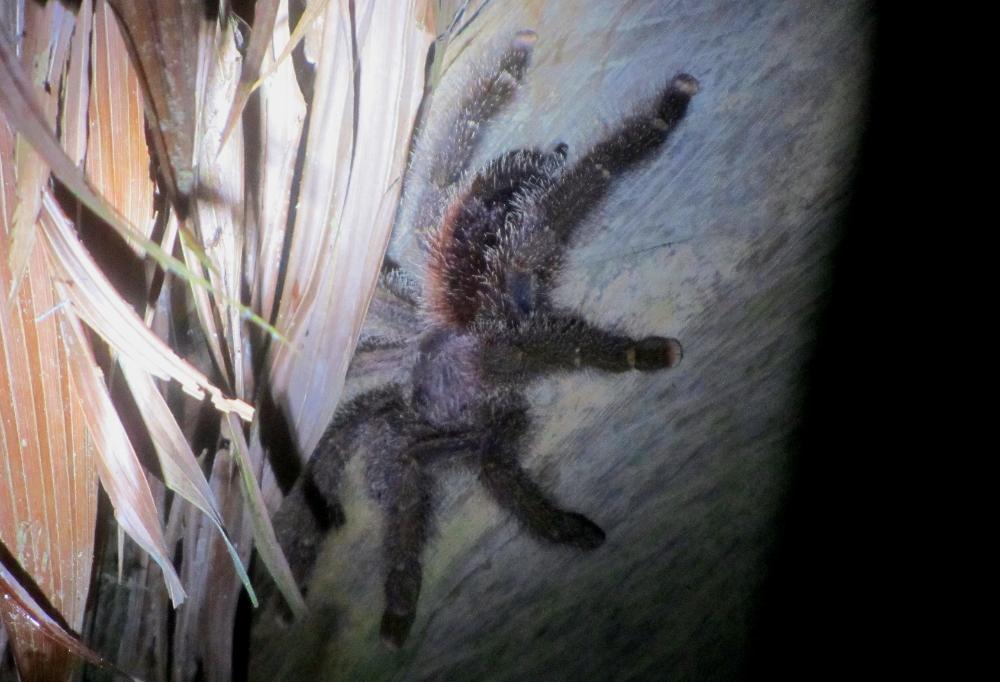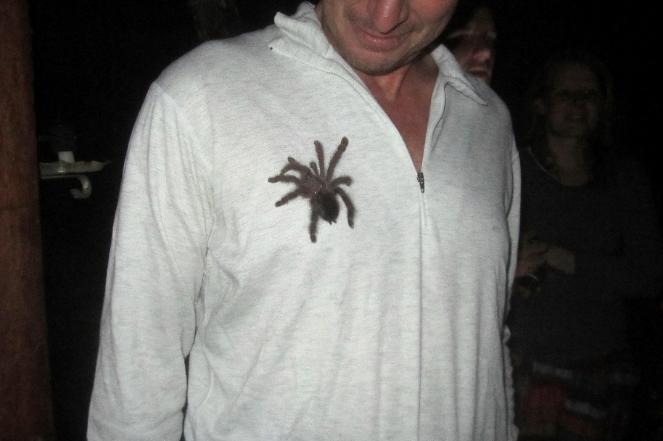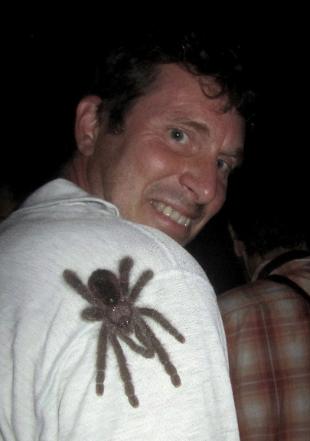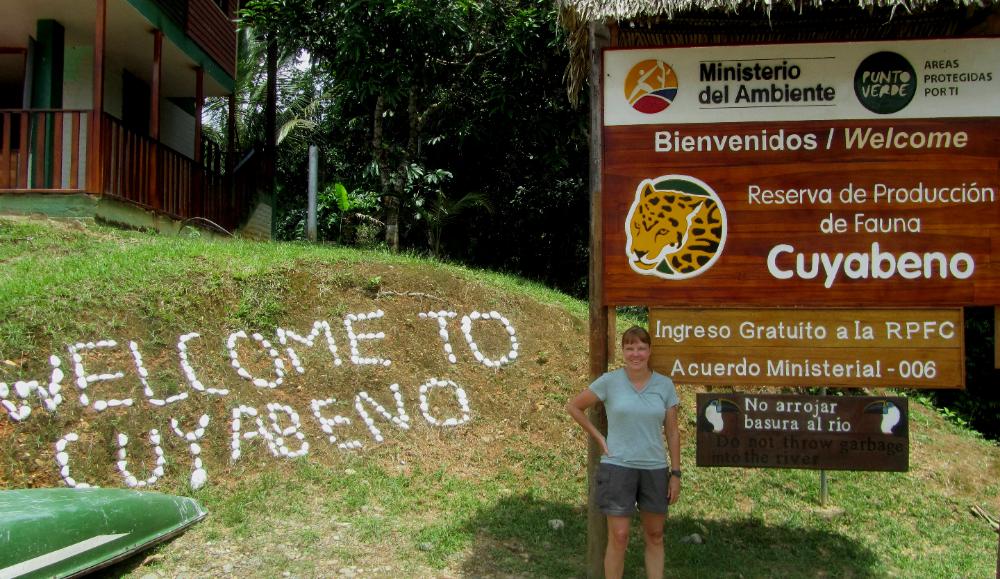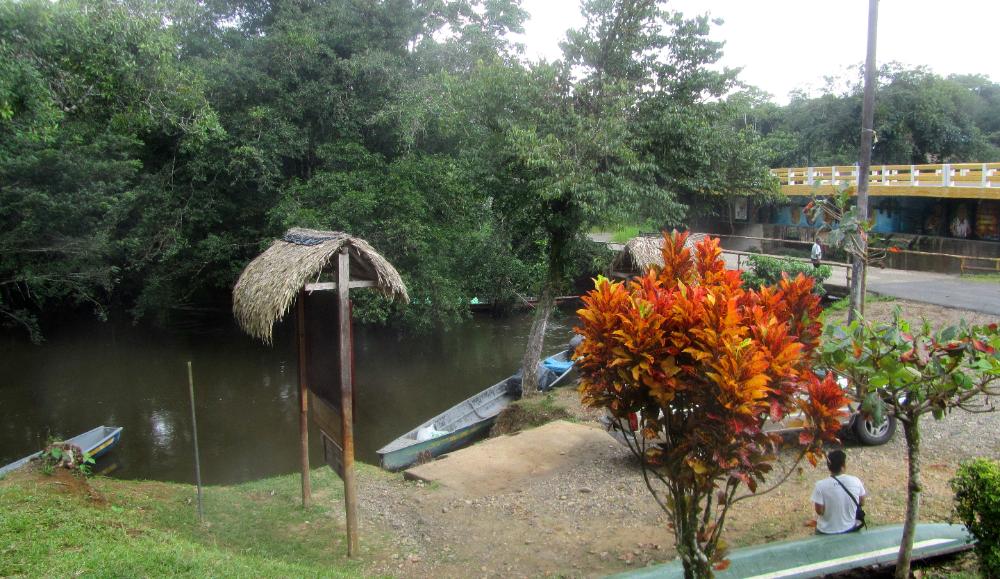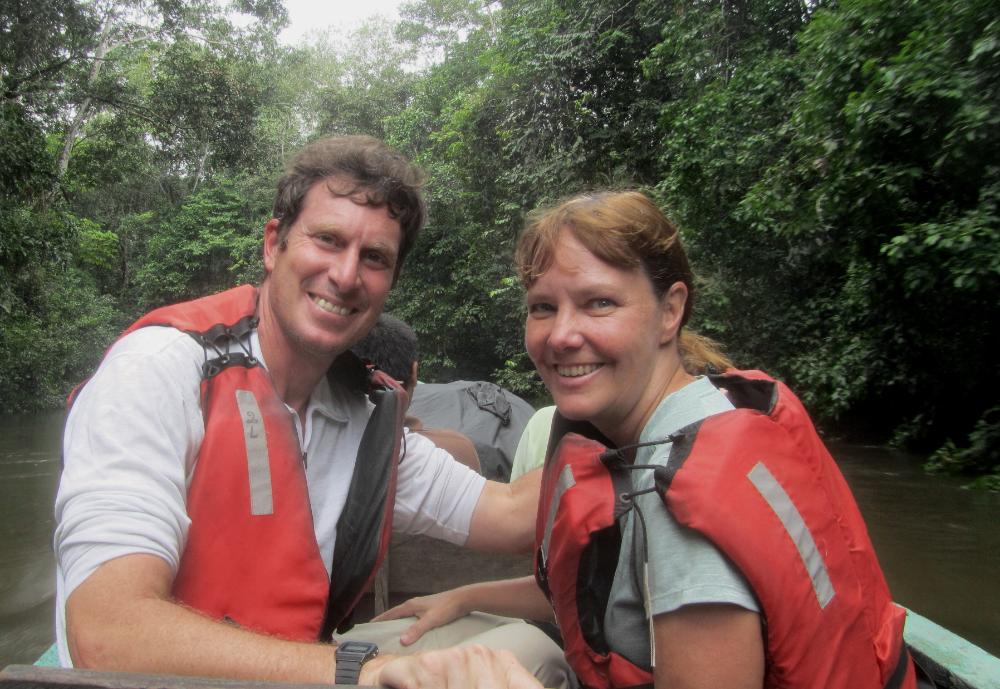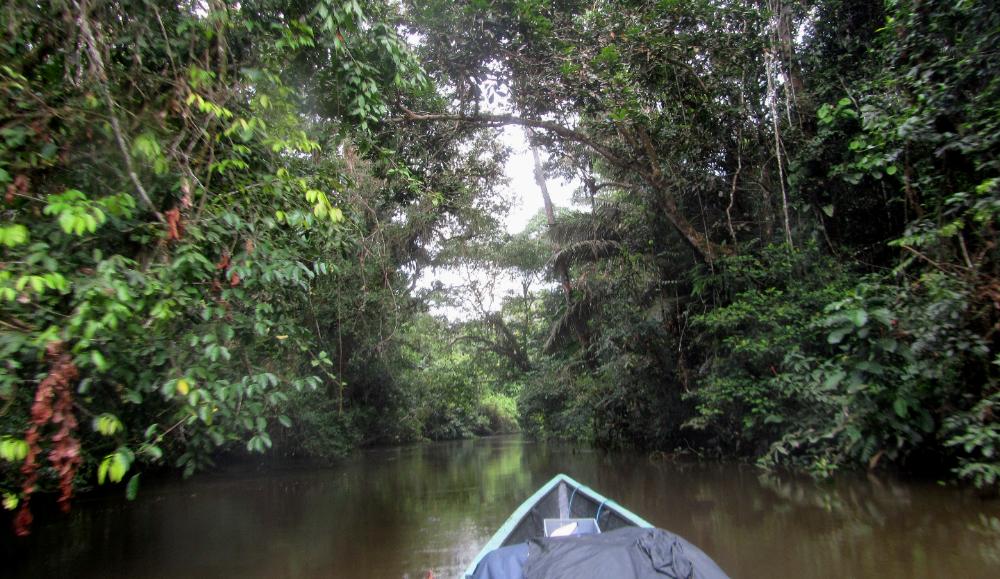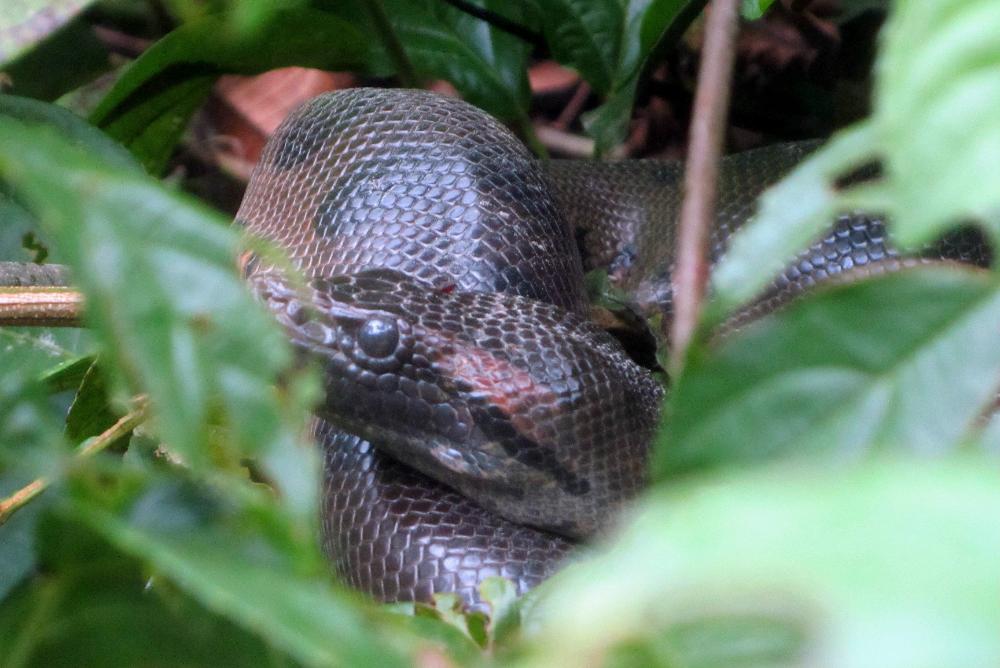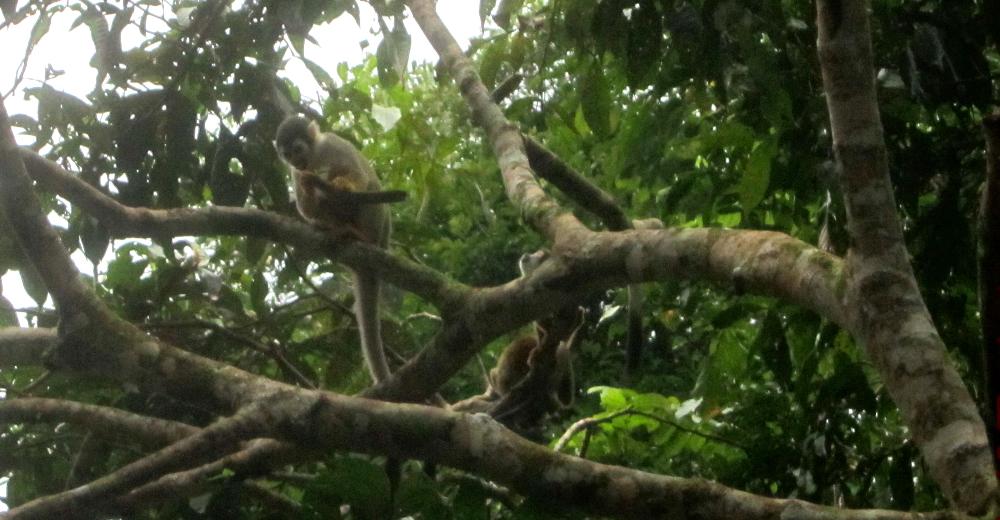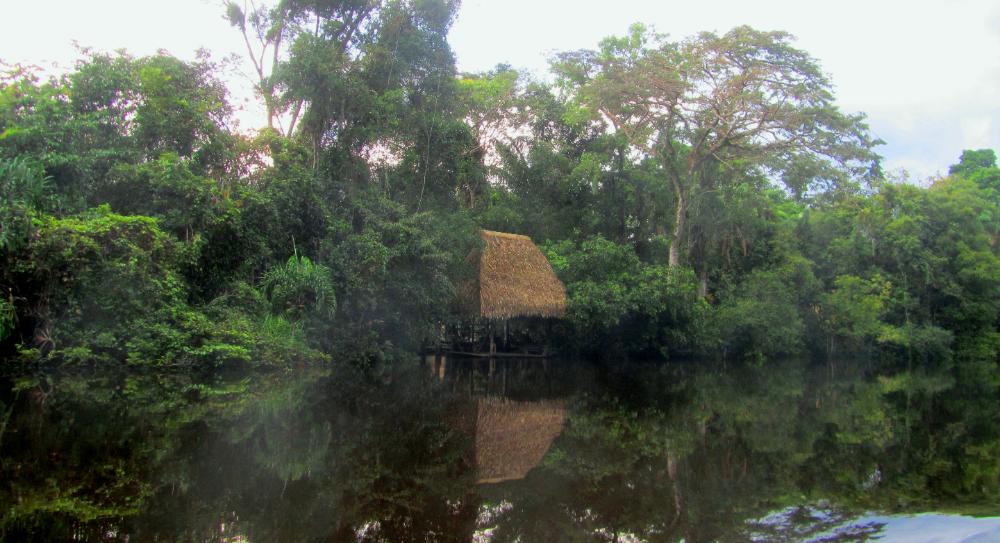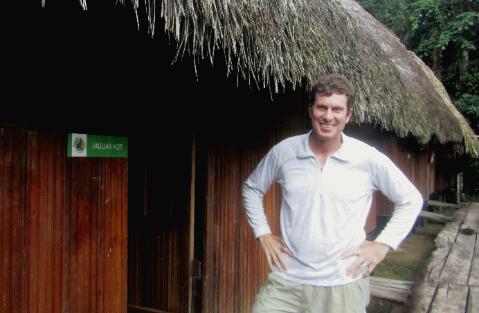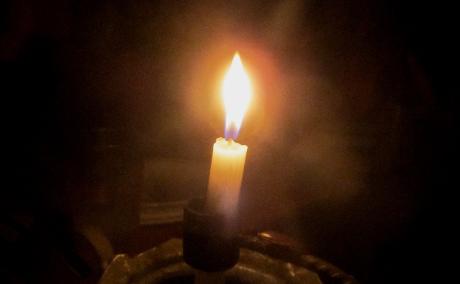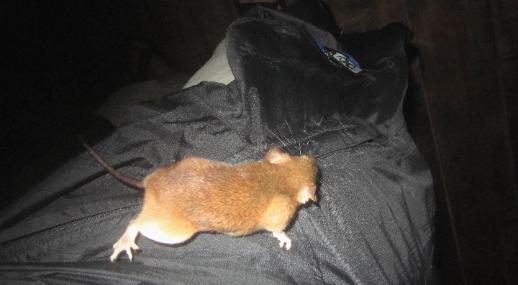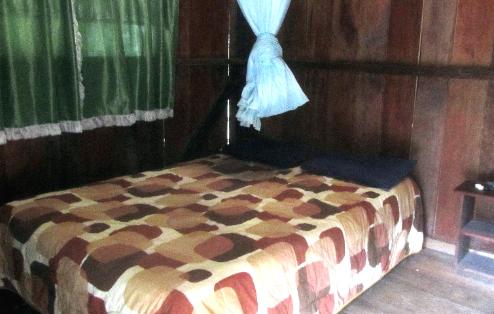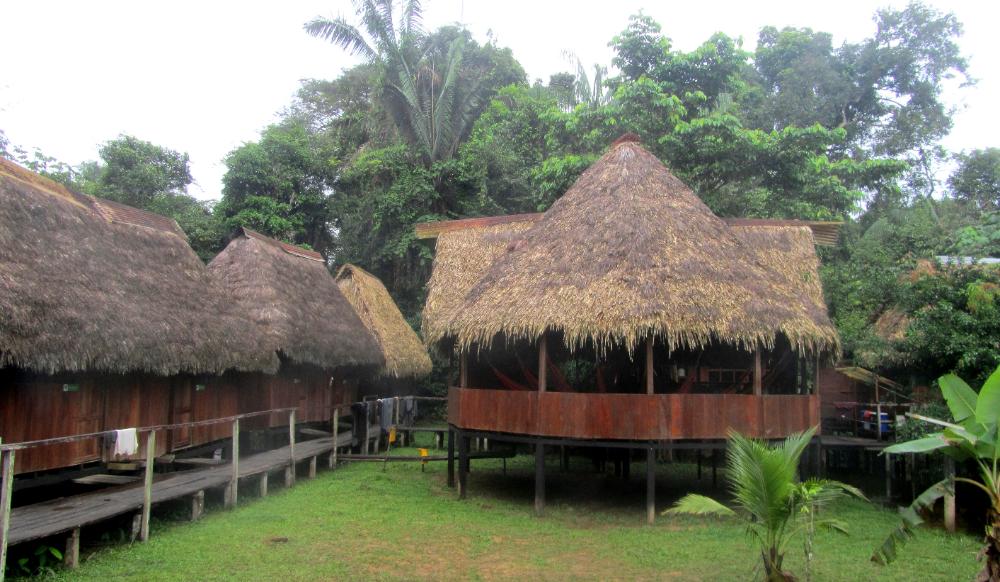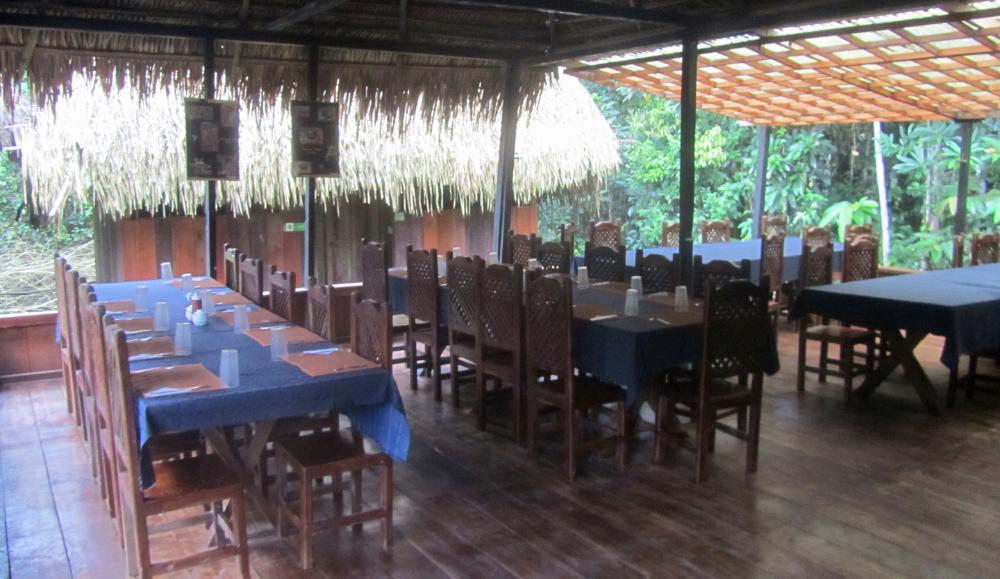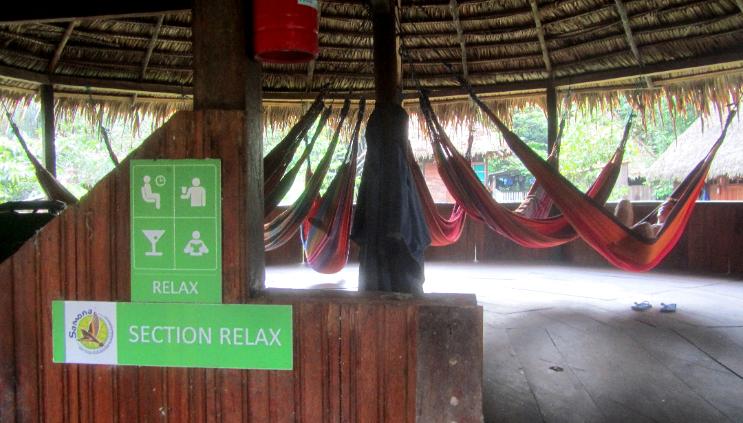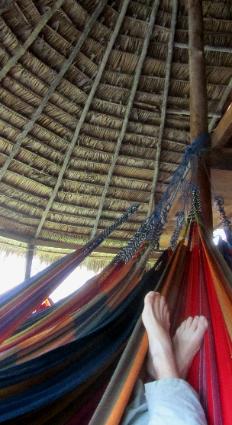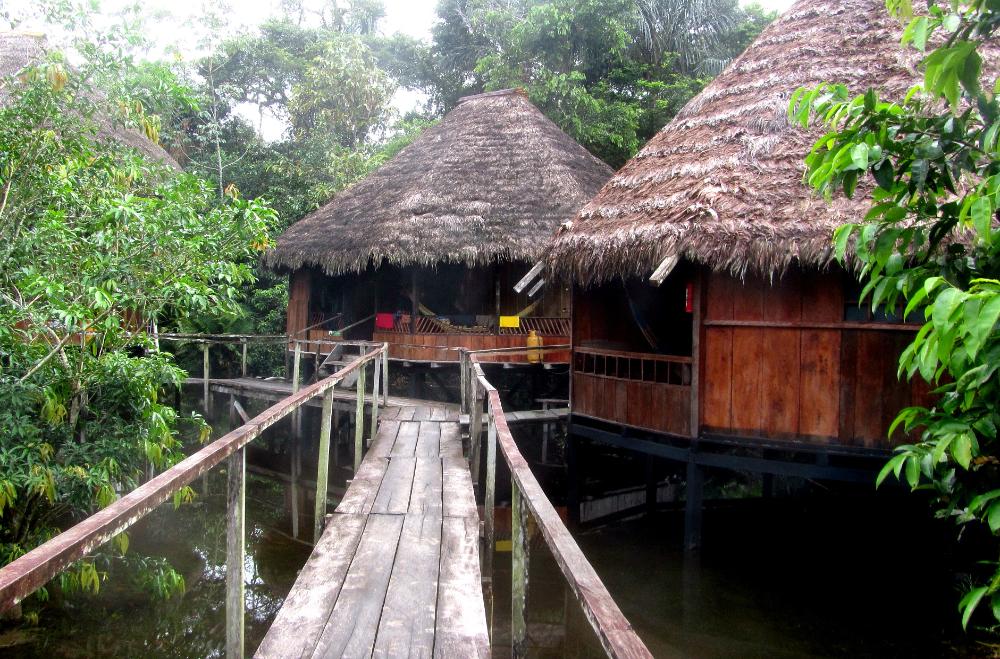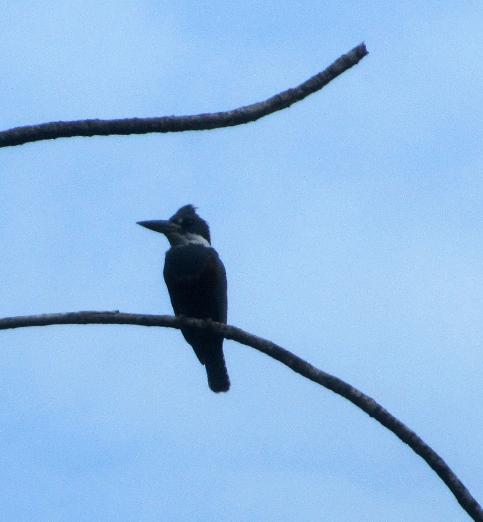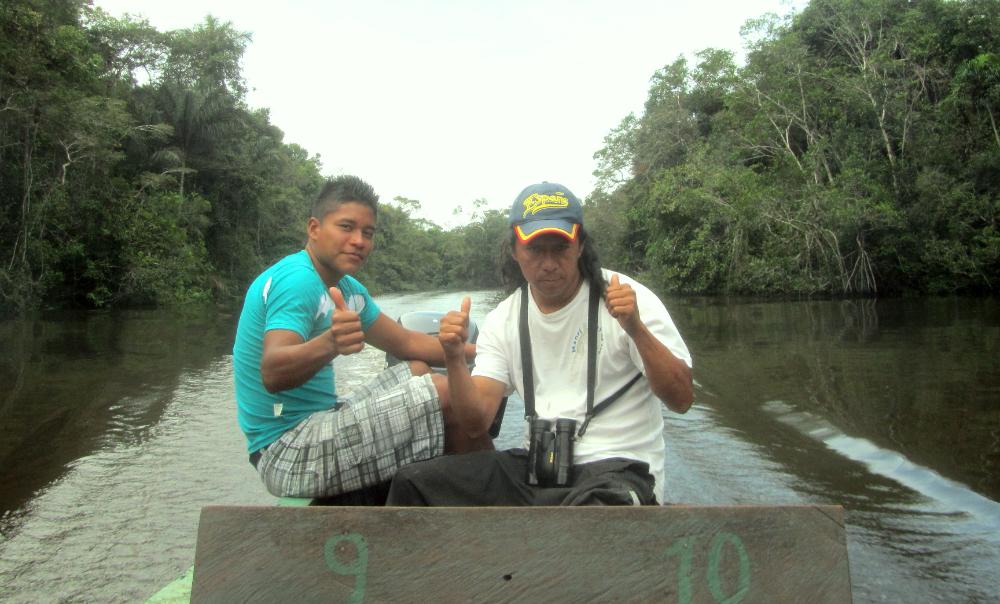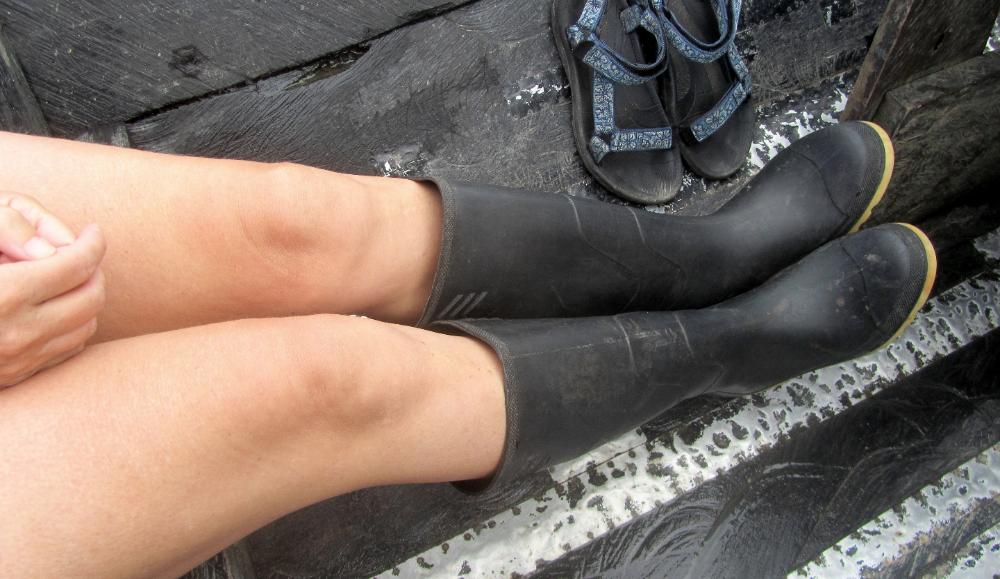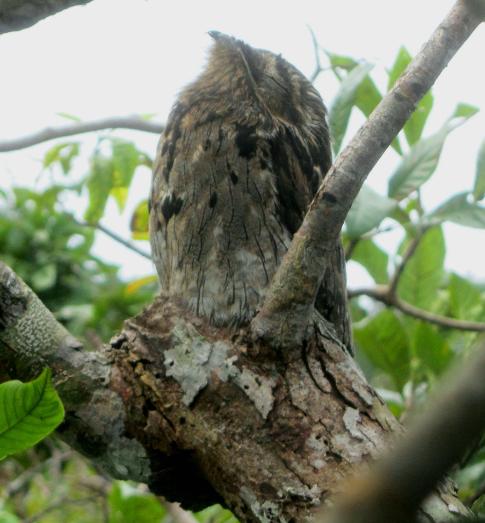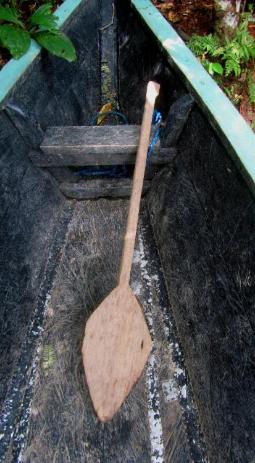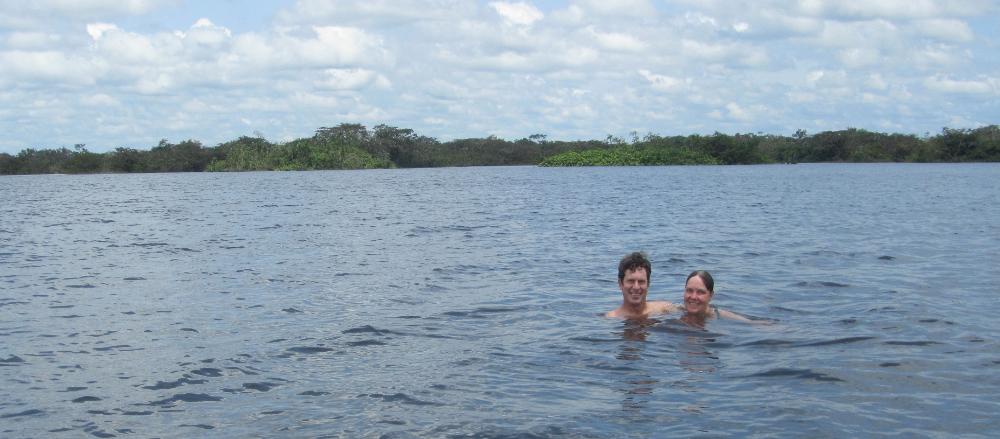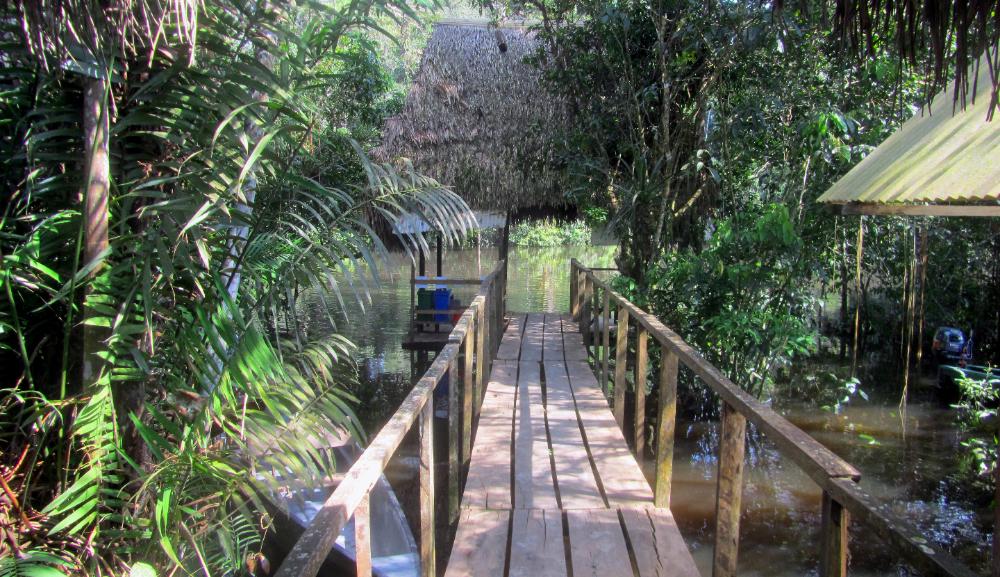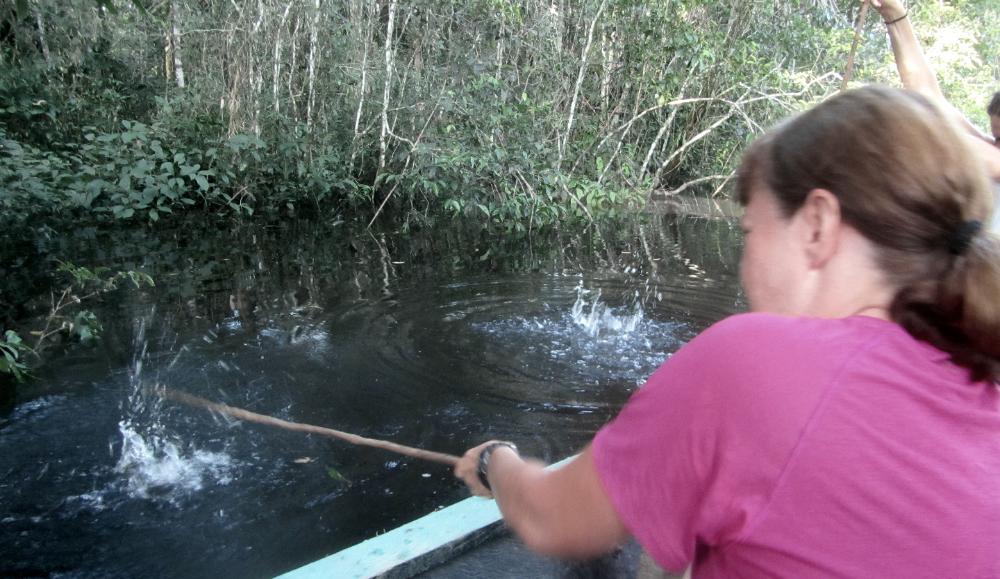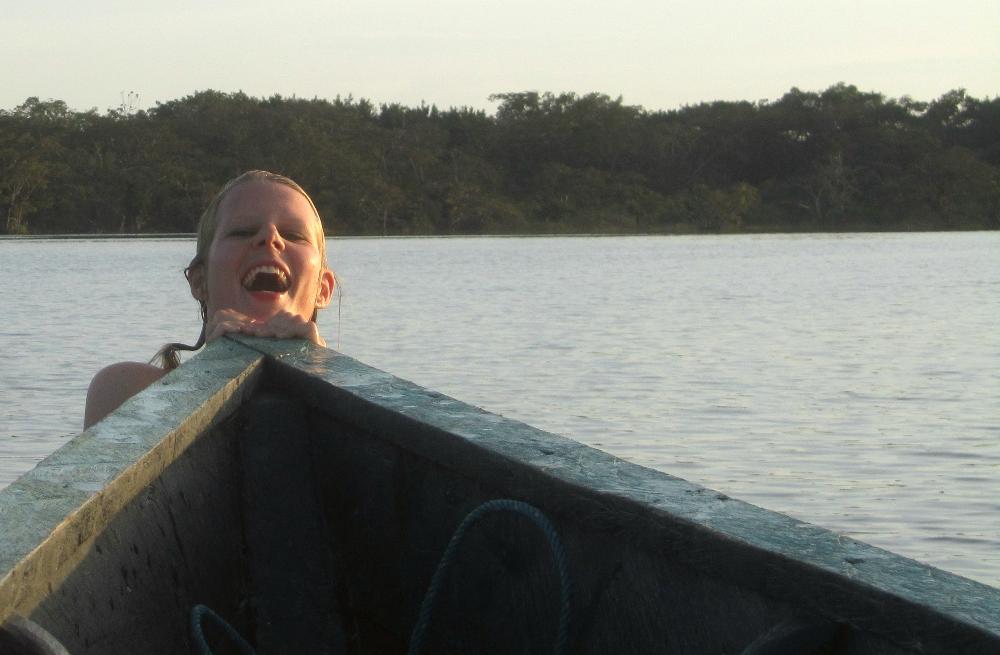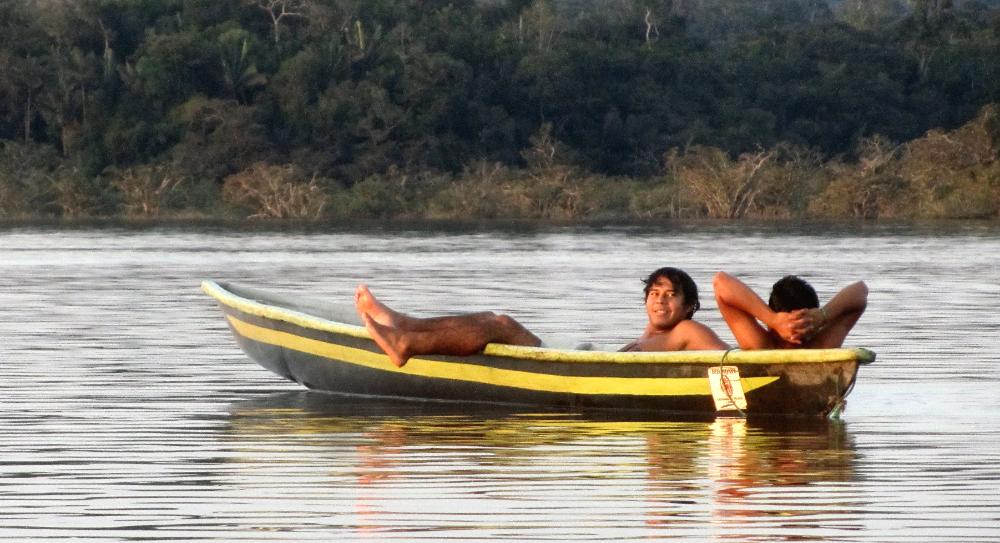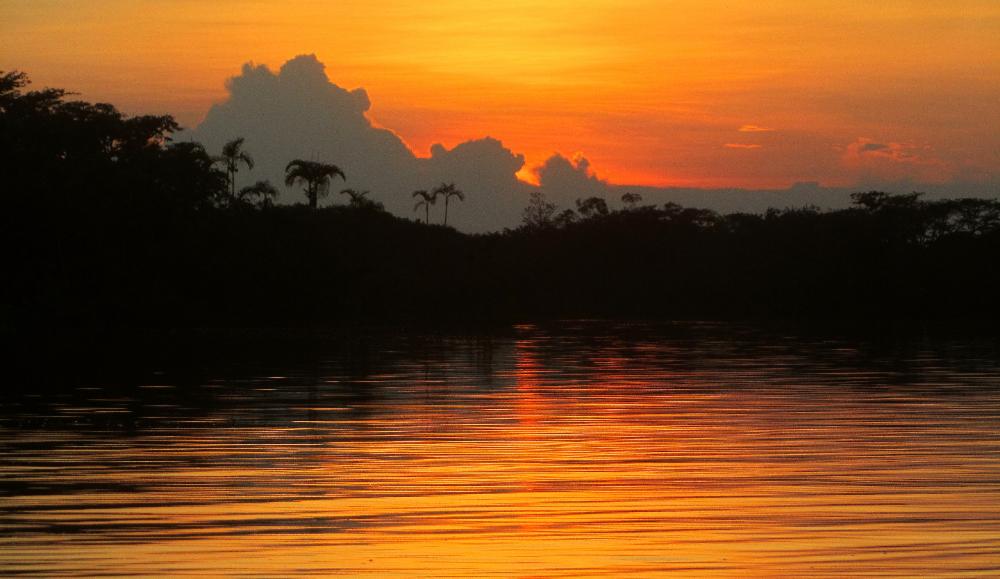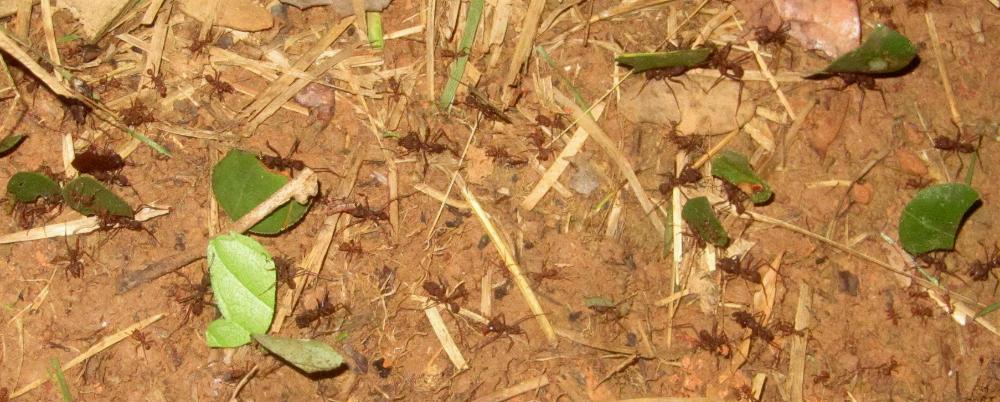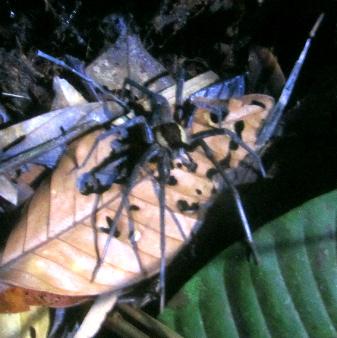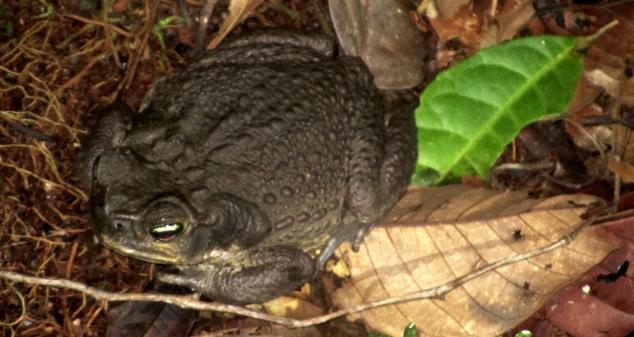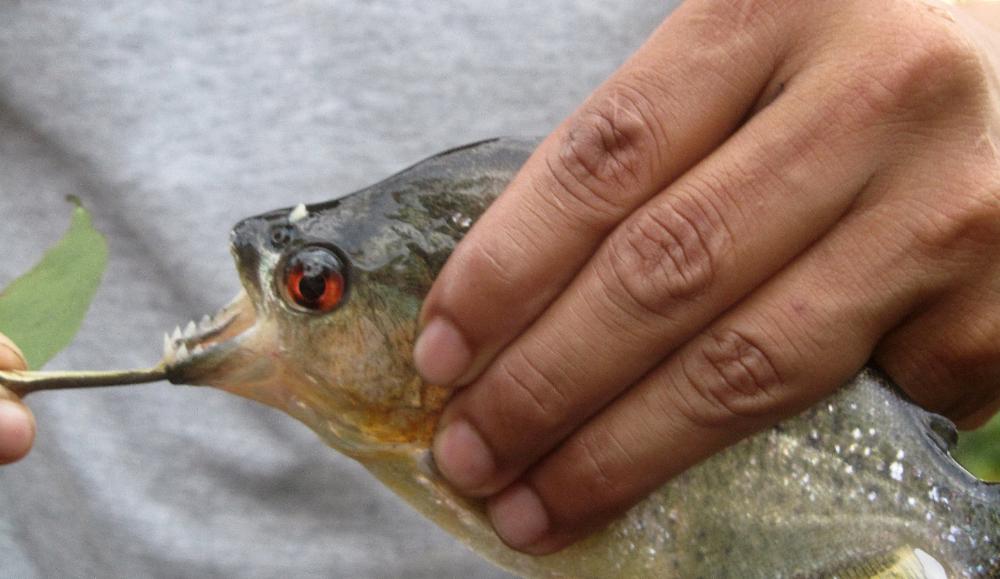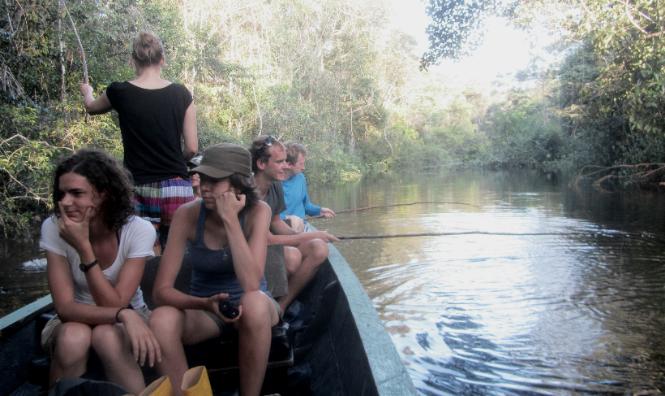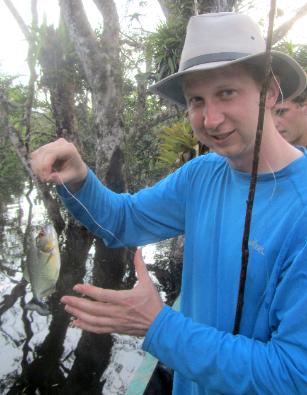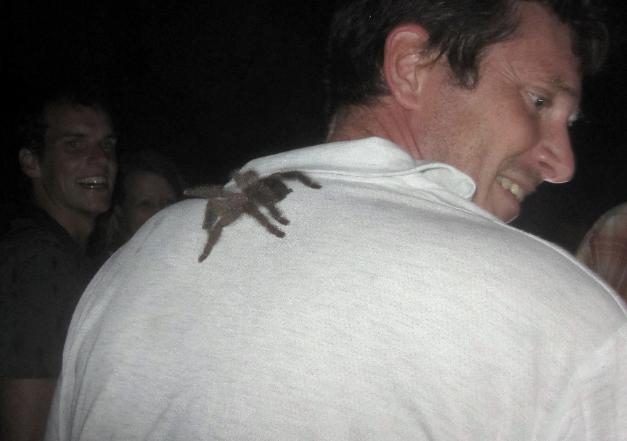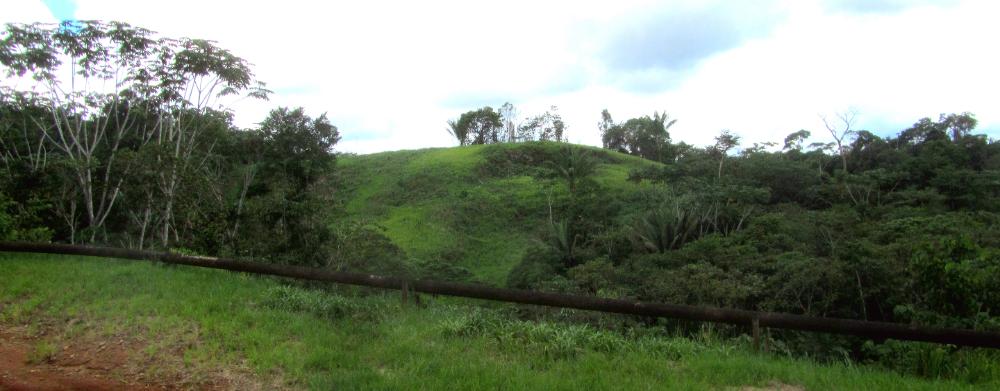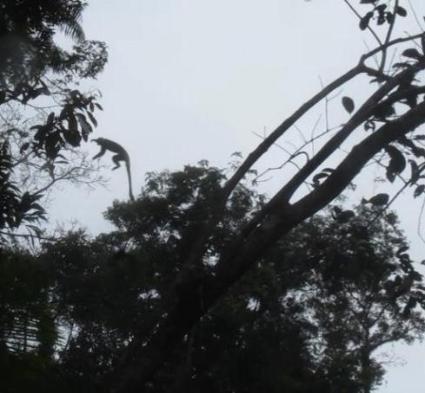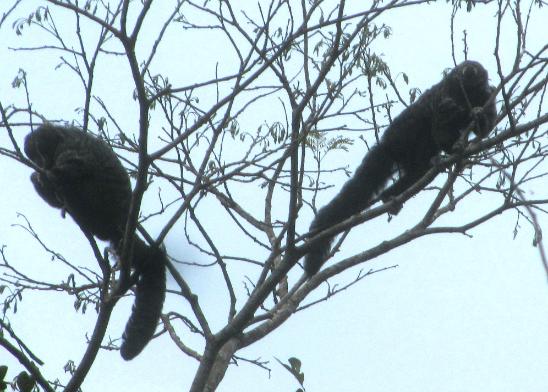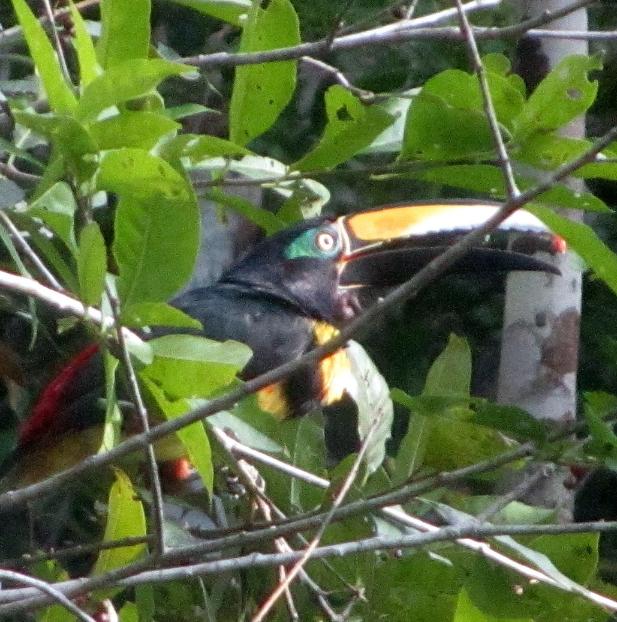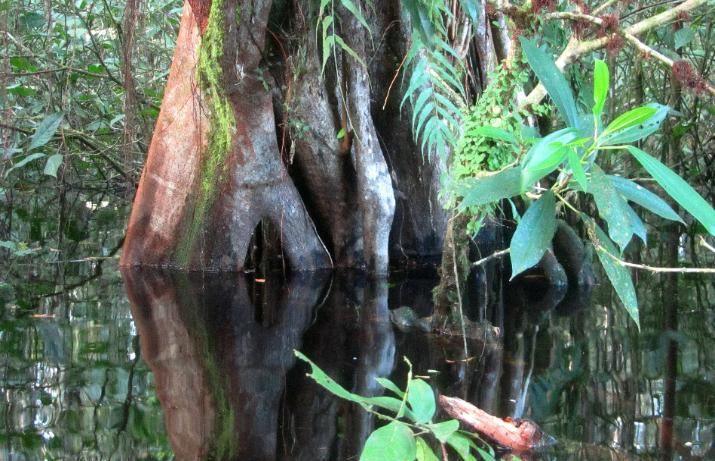Where We Be
Amazon Basin, Ecuador (Days 1-2)
|
We also saw scorpion spiders, land lobsters, and a poisonous toad. At one point Robin fell into a
pile of damp leaves and shot up from the ground faster than I would have thought humanly possible!
|
Perhaps the second biggest highlight of our
Ecuador trip after the Galapagos was visiting
El Oriente -- the Amazon Basin. We spent five
days in Cuyabeno Wildlife Reserve at Samona
Lodge and immersed ourselves in all things
Amazon: canoeing along the Cuyabeno River,
watching monkeys make impossible leaps from
tree to tree, fishing for piranhas, swimming in
Laguna Grande despite the caiman (alligators),
taking night walks to see the creepy-crawlies,
and even letting a tarantula crawl around on
me. El Oriente was definitely a memorable
experience!
Cuyabeno Wildlife Reserve is located in the far
northeastern corner of Ecuador and is one of
the most biodiverse sites in the world along
with neighboring Yasuni National Park. It feels
like a flooded rainforest because so much of it
is submerged. Forests "float" in the water and
most excursions are by motorized canoe. The
lodge itself is mostly on dry land, but a circular
boardwalk connects the rustic huts together. If
you're looking for an affordable deep-in-the-
Amazon experience, this just might be for you.
After dinner we went on a night walk and saw all sorts of animals, including leaf cutter ants
|
Usually when you fish you try to be quiet but not when piranha fishing! Instead you put some meat on a hook
attached to a bamboo pole and thrash the end of the pole in shallow water to simulate an animal in distress.
|
On either side of the Cuyabeno River the forest stretches out, half-drowned in water
|
We were especially excited to see toucans in the wild
|
A wooden boardwalk takes you from the river to the thatched huts
|
A lovely canopy of green towered overhead during our jungle walk. Our guide was an expert at
making different bird and monkey calls, and often the birds and monkeys would call back to him.
|
A vine curlicues its way around two different trees
|
Perhaps the most popular hut is "Section Relax" -- after a meal all the hammocks fill up with nappers
|
Guests meet here for breakfast at 8 am, lunch at 1 pm, and dinner at 8 pm. The food is excellent!
|
Around sunset locals and tourists alike come to Laguna Grande to enjoy the view
|
Most of the trees in Cuyabeno are partially submerged
|
Traditional Amazon canoe paddle
|
We disembarked from our canoe and headed off into the Amazon rainforest
|
We went for daily swims in Laguna Grande. Caiman sometimes swim in these
waters, but usually at dusk or night, not during the day (or so we were told).
|
We got the chance to do some piranha fishing
|
You can see the sharp teeth on this one
|
Wenke from Germany wasn't about to let a few caiman or piranha get in her way!
|
This apparent tree stump is actually a pygmy owl with its eyes closed
|
The lodge provides wading boots for hikes on "dry" land
|
Our guide Pajarito and our boat driver give us the thumbs-up
as we tool down the Cuyabeno River on our second day
|
A few huts are built on stilts above the water
|
Our Jaguar Hut had its own bathroom with hot shower (a nice surprise).
There's no electricity in the huts but candles in sconces provide some light.
|
Samona Lodge is beautifully situated on the Cuyabeno River
|
The central hut is filled with hammocks, and the big hut immediately behind it is the restaurant
|
From the boardwalk we spied this resident caiman (alligator)
|
With a guide's help, I let this cute little fella crawl around on me
|
This mouse dropped from the ceiling of the main hut!
We think a rainbow boa constrictor scared it!
|
Many of the huts had tarantulas living in the thatch roofs. (Really, I'm not kidding!)
|
We headed deeper into the heart of the Amazon Basin -- for another two hours!
|
We came across this small anaconda coiled around a branch
|
The fun really begins once you board the canoe
|
And squirrel monkeys like these. If you like monkeys this is a great place to visit.
We saw six species -- squirrel, capuchin, black, red howler, woolly, and monk saki.
|
The put-in point is also the welcome center for Cuyabeno Wildlife Reserve
|
At the put-in point we were served lunch then boarded a motorized canoe for the final leg of our journey
|
We flew from Quito to Lago Agrio (or you can take a 9-hour overnight bus). A driver from Samona Lodge
met us there and drove us two hours along good roads to our put-in point on the Cuyabeno River. Note
the oil pipeline stretching alongside the road -- big discoveries of oil were made here 50 years ago.
|
We loved watching squirrel monkeys make daring leaps
|
Yikes! Don't fall off the boardwalk!
|
We expected lots of creepie-crawlies in our hut that night but
only saw one or two cockroaches and a harmless tree frog
|
Kingfishers are a common sight along the river
|
Who knew sunsets in the Amazon could be so spectacular?
|

